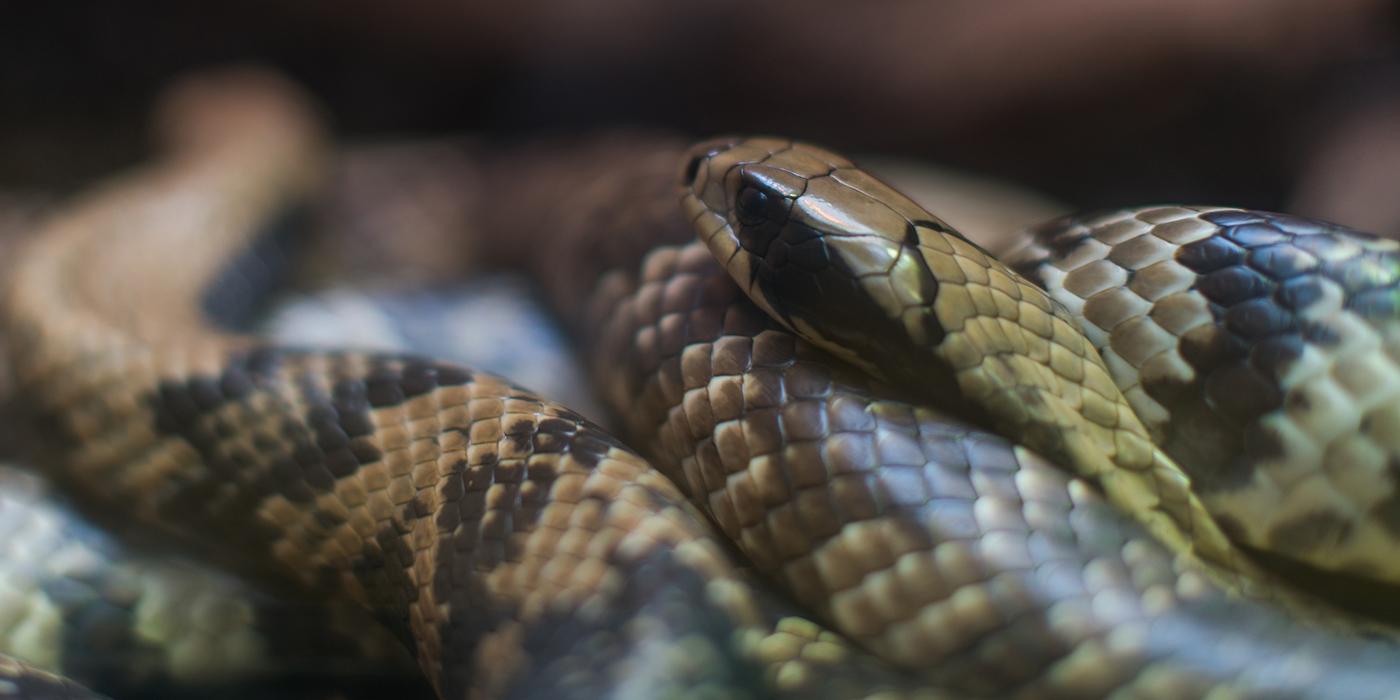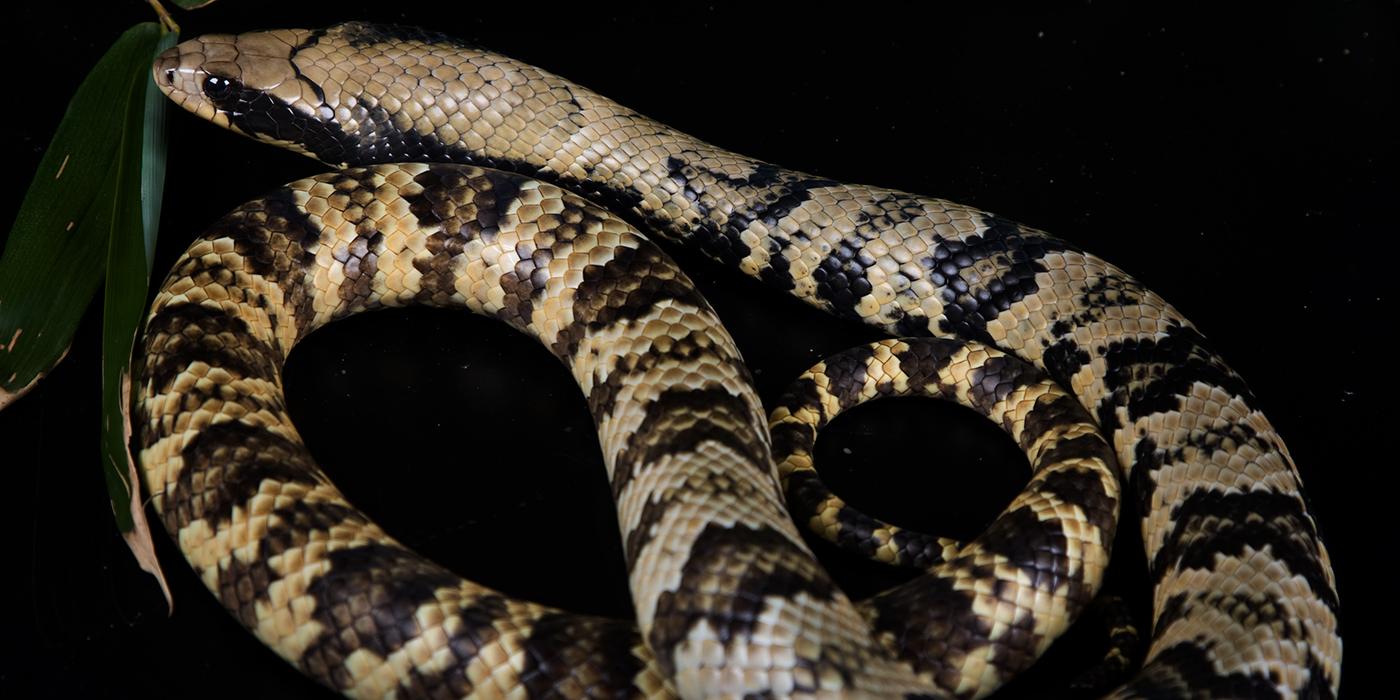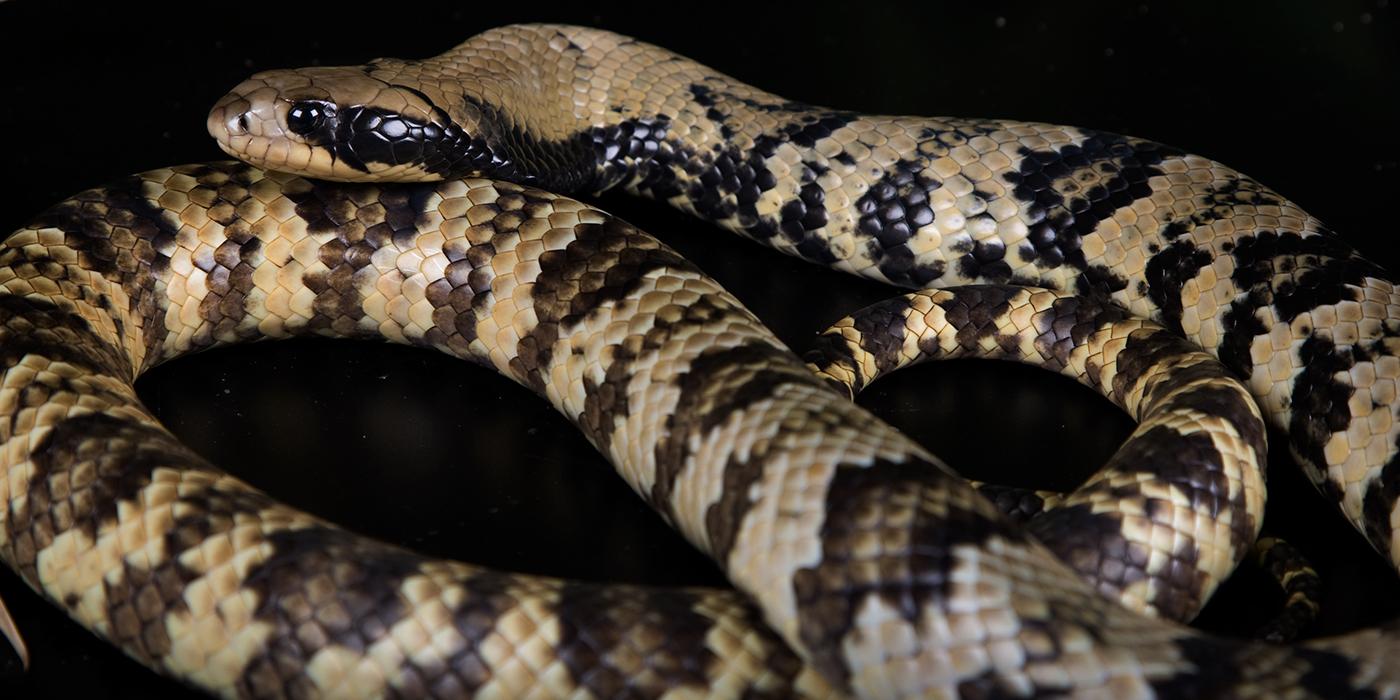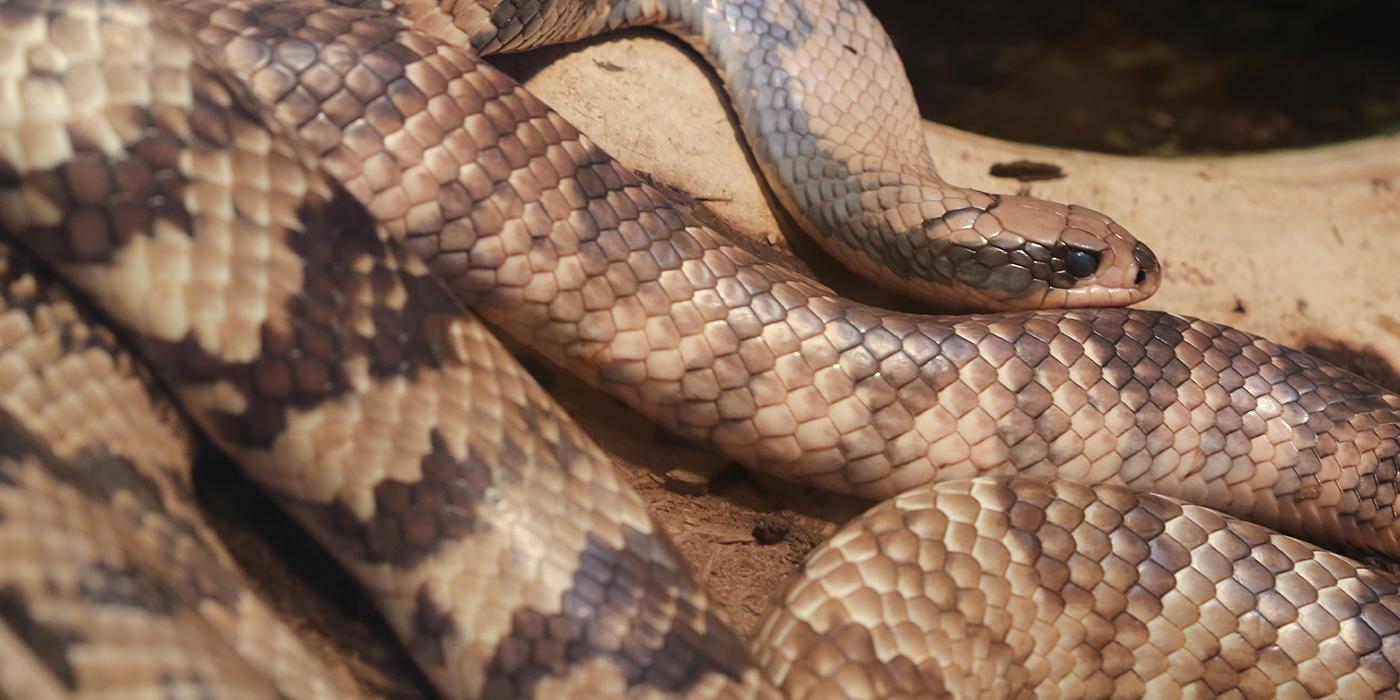Physical Description
False water cobras grow to an impressive size and are one of the larger snakes found in South American floodplains. They are a diurnal species and can be considerably active throughout the day where they climb, burrow and swim. The most common name for this snake in its native range is ñacaniná (niyah-kah-nee-nah), which originates from the Guaraní people who inhabit Brazil, Paraguay, Bolivia and northern Argentina.
The false water cobra is named for its ability to flatten its neck to appear larger. This gives the snake the appearance of a cobra. However, unlike a true cobra, the false water cobra does not prop itself up vertically but maintains a horizontal position. This species can also flatten other areas of its body, while a true cobra cannot.
These snakes are venomous, but the toxicity of their venom has not been thoroughly studied. If the human body is exposed to large enough quantities, the venom can inhibit blood clotting, cause swelling and create quite a bit of discomfort. The false water cobra does not have an injecting apparatus, as some snakes with fangs at the front of their mouths do. Instead, its fangs are located at the back of its mouth, and it has to chew its prey to inject its toxin.
The false water cobra is also lacking a large venom gland. Instead, it has a Duvernoy's gland, which is found in many rear-fanged snakes and is separate from the salivary gland. As such, saliva from these snakes is not toxic, but secretions from the Duvernoy's gland are. Because of these characteristics, when fending off predators or displaying aggression, adult false water cobras generally do not attempt to envenomate but instead bite with a slashing motion to inflict a wound.
Size
Native Habitat
Food/Eating Habits
The false water cobra's size, abundance within its range and generalist diet make it an important predator in the region it inhabits. This snake feeds primarily on tadpoles, fish, frogs and other aquatic amphibians. It also eats reptiles, mammals and birds found in wetland habitats. False water cobras are voracious, aggressive predators. They hunt by grabbing and partially coiling their bodies around their prey, then swallowing it live.
Reproduction and Development
Conservation Efforts
Like other neotropical snakes, false water cobras are understudied, and further research is need to understand their natural history and full ecological significance. What is known about this snake is that it is an important predator in its native wetlands, helping to keep populations of other species in check.
These wetlands were once home to apex predators, such as jaguars and giant Brazilian otters, that also fulfilled this function. However, those animals are either locally extinct in certain regions or greatly reduced in numbers due to human activity. A better understanding of false water cobras could help protect the species and its habitat.
Help this Species
- Organize or attend a stream, river, lake or other waterway cleanup in your area to preserve aquatic habitats for local species.
- If you see a snake in the wild, leave it alone and encourage others to do the same. Don’t assume it is a venomous species, and don’t attack it if it doesn’t pose a threat to your safety. Tell your friends and family about the eco-services that snakes provide, such as keeping rodent populations in check.
Animal News

Leaf-tailed Gecko Treated for Skin Cancer With Chemotherapy






